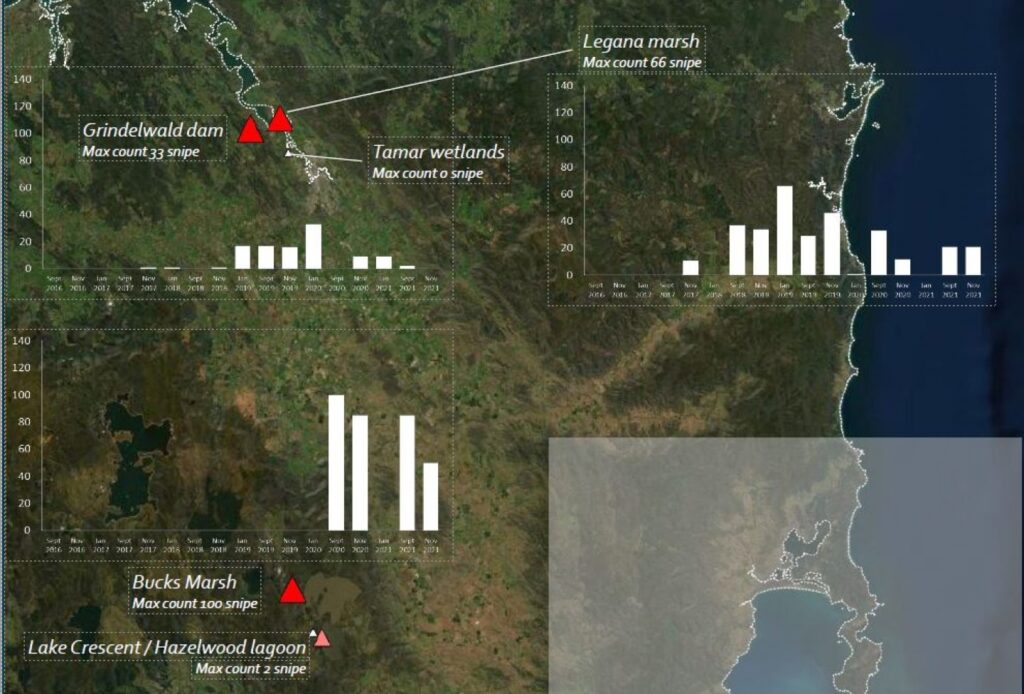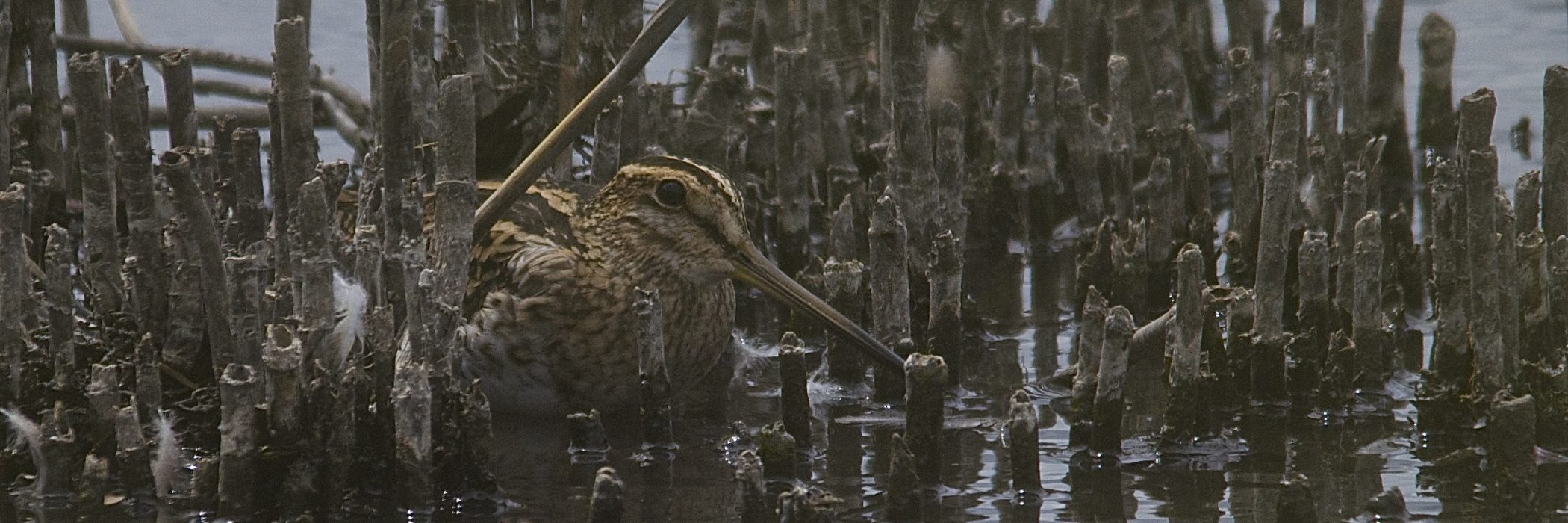The Latham’s snipe project
Did you know that the TLC’s Silver Plains property has become an important site for research into a migratory shorebird?
Silver Plains, one of the TLC’s New Leaf properties, has a proud tradition of supporting scientific research. Our eastern quoll recovery project is conducted here, and Silver Plains is also the site of deer research and for part of the Australian Mountain Research Infrastructure Facility.
And now Silver Plains is providing data for the Latham’s snipe project. Project leader Birgita Hansen has put together the following summary so TLC supporters can learn more about this bird and its behaviour.
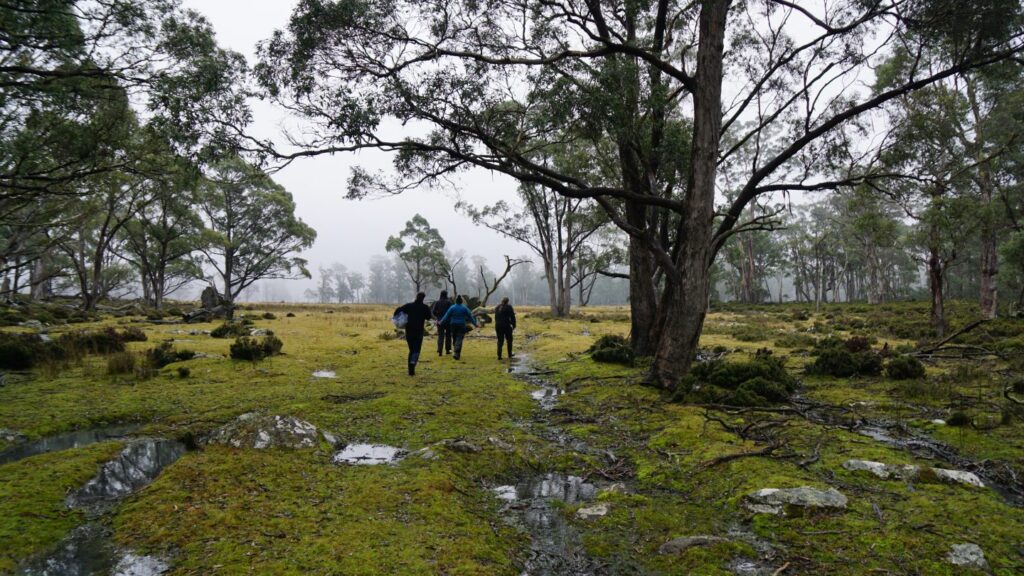
The Latham’s snipe project has revealed that Buck’s Marsh, at Silver Plains, is an important site for snipe: we are keen to gain an understanding of the significance of this site for snipe conservation. Buck’s Marsh is unusual in having a relatively large population size, and is located inland and at higher altitudes than other monitoring sites. Furthermore, it is relatively unmodified. Buck’s Marsh may turn out to be disproportionately important for snipe conservation as the site is at a lower risk of loss through conversion to housing and other intensive land uses.
Who is the Latham’s snipe?
Latham’s snipe (Gallinago hardwickii) is a medium-sized cryptic migratory shorebird species that breeds in northern Japan from May to July. It migrates to Australia in August and September and spends its non-breeding season (October to February) in shallow, vegetated, freshwater wetlands, feeding up in preparation for its return flight to Japan in March and April.
Snipe usually feed at night in open, muddy wetlands and wet paddocks, feasting mostly on invertebrates that live in the sediments. They roost during the day in nearby wetlands, which are often geographically distinct to their night-time foraging sites. In Japan, they breed in meadowlands, woodlands and agricultural land.
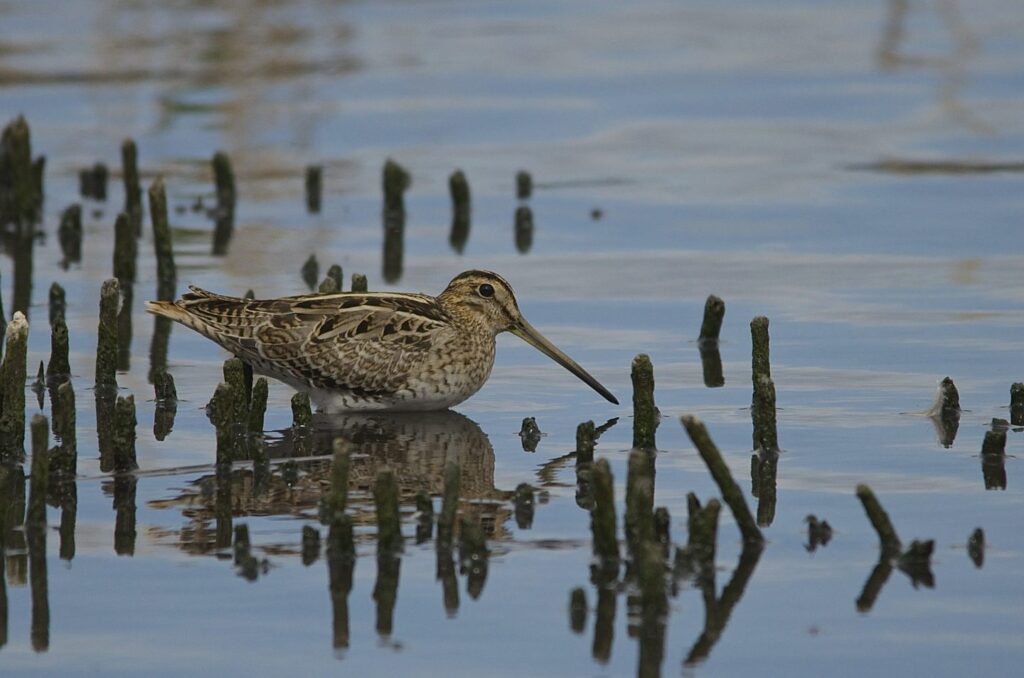
Snipe breeding habitat is threatened by changing agricultural practices. Surveys conducted in 2020 by the Wild Bird Society of Japan detected significant decreases in numbers of snipe at a subset of sites.
The population size is estimated at 35,000 birds, based on data from the breeding grounds. Monitoring population sizes in Australia is challenging due to difficulties in observing snipe, so the trends of snipe populations in Australia are unknown. However, snipe are threatened by wetland habitat loss, which is an ongoing problem. Latham’s snipe is one of 37 migratory shorebird species listed as matters of national environmental significance under the Environment Protection and Biodiversity Conservation Act 1999.
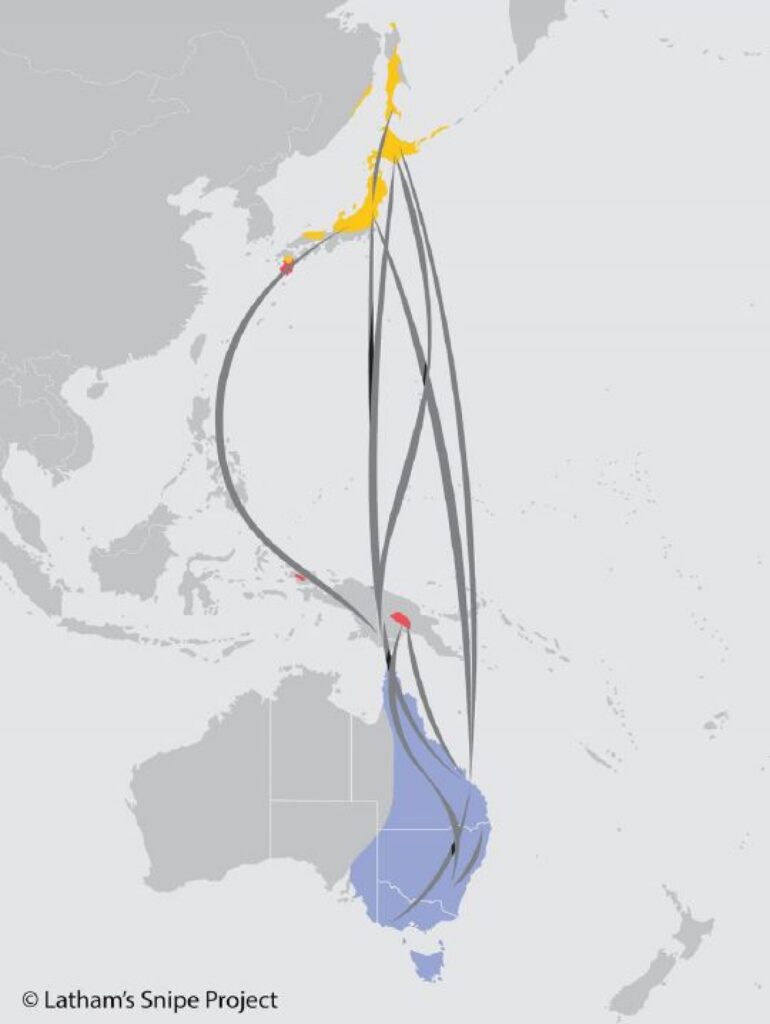
Migration
Limited tracking data from tagged Latham’s snipe has revealed that they undertake direct flights across the Pacific Ocean. It is unknown if they also migrate through south-east Asia, island hopping.
Under favourable weather conditions, snipe will take three to five days to fly more than 7,000km between northern Japan and south-east Queensland. Migration stopover sites provide additional feeding habitat for snipe en route, to support their long-distance flights. The location and characteristics of important stopover sites are poorly understood, but protection of stopover and non-breeding sites is critical to the survival of snipe on their migration.
Snipe using Tasmanian sites during the non-breeding season have the greatest distance to travel to their breeding grounds and therefore need to maximise their feeding opportunities while in Australia.
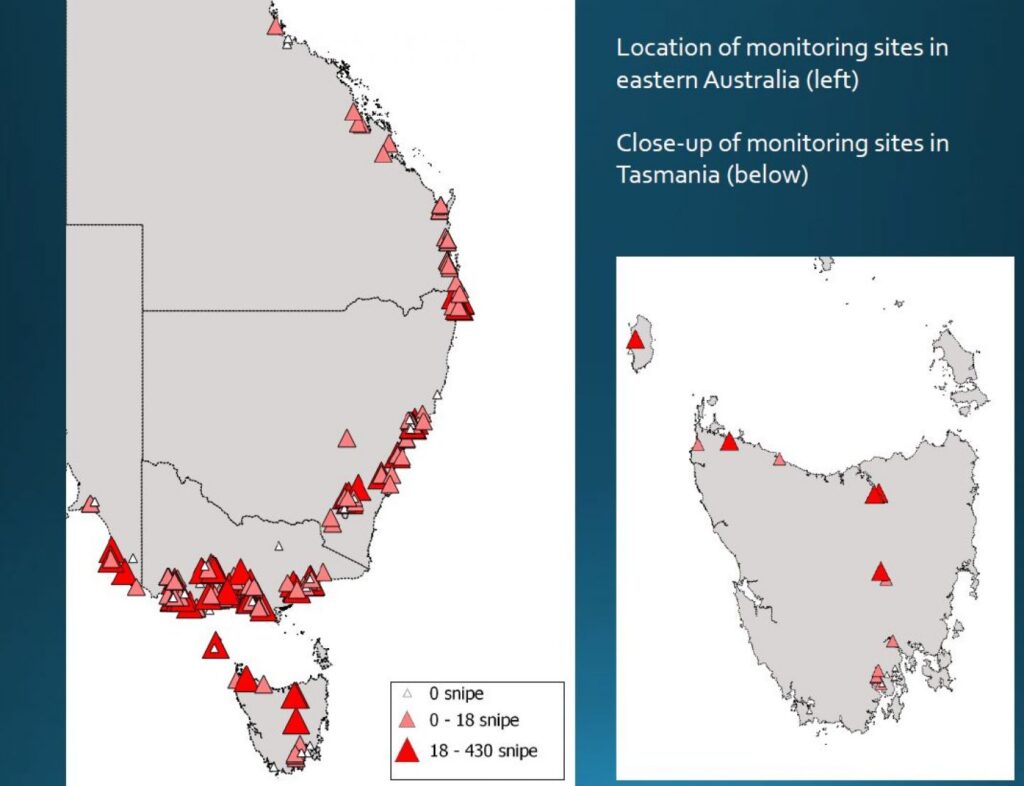
The Latham’s snipe project
The Latham’s snipe project was established to:
- determine the contemporary distribution and abundance of snipe in Australia
- identify sites that meet the criteria for national importance under the EPBC Act (that is, they have 18 or more snipe)
- explore population trends in Australia – are snipe increasing or decreasing in different parts of the country
- determine exact migration routes and stopover sites between Australia and Japan.
Buck’s Marsh, on the TLC’s Silver Plains property, was added to the national snipe surveys in September 2020. It has had nationally significant numbers of snipe recorded on all except one survey. It compares favourably in numbers to other sites in the region that have been monitored for longer (see graphs below). It is an important site for snipe over their non-breeding season when they are fattening up in readiness for their migration to Japan.
Continuous longitudinal monitoring is essential to understand how Latham’s snipe use wetland sites, as snipe numbers can vary greatly from year to year depending on climate and rainfall. The Buck’s Marsh site is a recent addition to the national snipe surveys and the early monitoring results have revealed the site to support relatively high numbers. Therefore, it will be important to continue monitoring it alongside other sites in eastern Australia to determine how use of the site changes over time and how that compares to other monitoring sites in Tasmania.
